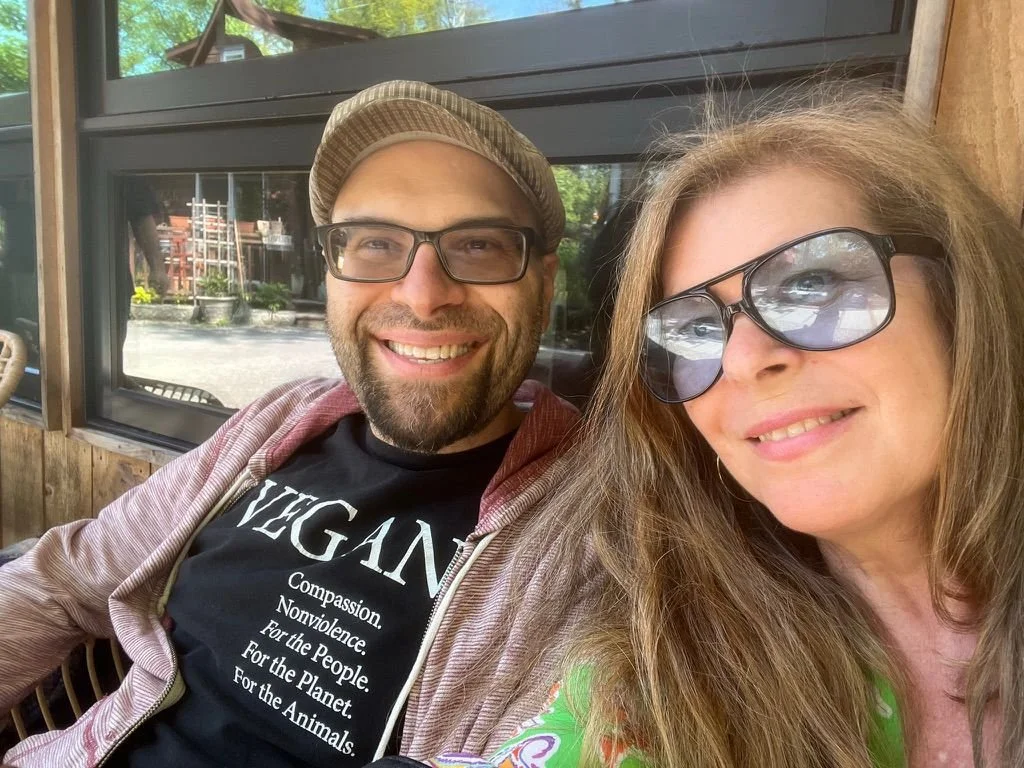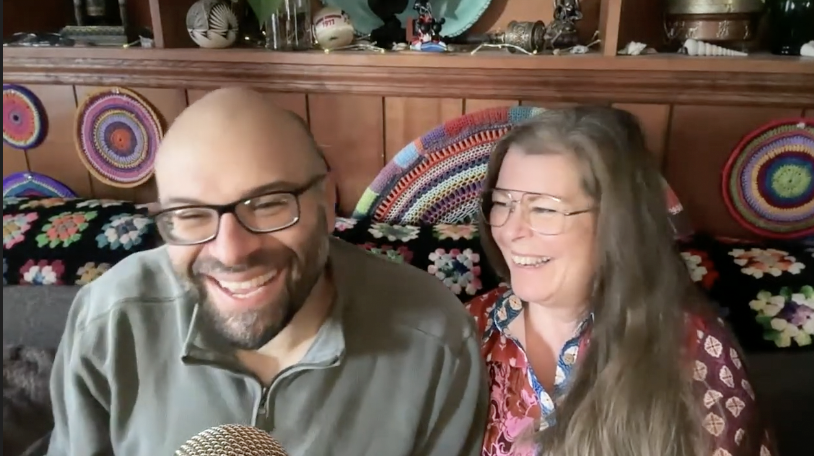The First Steps to Awakening
Welcome to The Awakening Curriculum
-

Patreon
If you would like to support our work and join as a patron where you get first access to material and exclusive content, we would be happy to have you.
-

The Awakening Curriculum YouTube
Find the whole Awakening Curriculum, with sofa sits talk, lessons, guided meditations, inquiries, and Q&As.
Please Subscribe, Like, and Share videos. It helps! -

Unfettered Mindfulness YouTube
You can find lots of guided meditations, inquiries, live guiding sessions, recordings of our monthly Inquiry Group, and lots more here.
Please Subscribe, Like, and Share videos. It helps! -

LinkTree
You have everything we do in one place via our LinkTree
The Awakening Curriculum as a Direct Path to Awakening
The Awakening Curriculum is about more than just the Buddhist concept of the 10 Fetters. It is an integrated approach that we (Todd and Pernille Lent Damore) use to help people see through the numerous levels of identification that come online constantly throughout the day.
It is these overlays of identification, on our otherwise neutral and content experience, that create all of the suffering that drives so many of us into lives of seeking for resolution or distraction.
We use a diverse range of tools from the non-dual tradition including Guided Meditation and pointed Self-Inquiry. But since our entire perception of who we believe we are, and how we believe the world to be, is based on impersonal causes and conditions, we integrate aspects of Developmental Psychology, Psychomotoric Therapy, Embodied Movement, Re-Parenting, Affirmations, EMDR, Acupressure, and more.
This provides a holistic approach to the Awakening Path that takes all parts into consideration: the physical, the emotional, the psychological, and the energetic, without fully affirming or denying the existence of any of them.
Why Do We Use This Approach?
We live in a relative universe where the body both exists (it needs nutritious food, and exercise, and good self care) but also doesn’t (it is mostly made up of the empty space between atoms, which are themselves made of the very same building blocks as the surrounding environment). And in deeper meditation states, or of those in the higher Fetters, the feeling and perception of the body can radically change, or disappear altogether.
We can hold all of these relative truths equally, because none of them are fundamentally the one and only Truth. Each view can be useful or detrimental depending on our purpose.
If we deny the body, and instead let it starve and rot, then this is not a healthy conducive view to hold.
If we believe that material form, and that everything I experience is all that is real, then we severely limit our understanding of the universe, as well as dismissing many life-changing experiences that are within the scope of this BodyMind organism.
Each view is made relevant by the lens and the needs of the one who is using it. And that may change throughout the day.
So we bring them all together, using whichever tool is appropriate for each person, applying course-correctives to bring balance without any artificial limitations as to whether or not a particular tool fits in with the “non-dual paradigm”.
Sometimes we need to reconstruct a healthy sense of self before we can see that one never was there at all.
The path is not always comfortable; we often encounter many things that we haven’t felt safe enough to confront in the past. But we can do it with openness, gratitude, love, and kindness.
The most important thing is to stay open. And stay curious.
It’s okay. Nothing is the way you believe it to be.
“Finally. A spiritual path that not only allows for, but embraces the need to feel and heal all that comes with also being a human being with emotions, traumas, pain and fear. ”
See Through The Self Delusion Course
We are so happy that there is now a full course for you to see through the identification of the self!
This course is like a practical handbook of all of the different angles that you need to be aware of when you are investigating identification in your direct experience. We hope that it will be equally useful to people who are absolute beginners on this awakening path, as it will be to seasoned seekers who believe they have seen through the sense of self and are currently working with the higher fetters. We believe that everyone will find things in the course that will help them to deepen their insights regardless of whichever stage of awakening they feel they are in.
Take your time with this course! It is quite comprehensive. Through it we will be discussing many aspects of awakening, some of which tend to be overlooked by those on the path. We stress the importance of integrating awakening into our daily lives, so we spend a lot of time helping to bridge the gap between the spiritual world and the relative mundane one in which we all live.
In this course we will go into detail about meditation practices, discerning thought from “reality”, how to approach long-held trauma, how to investigate and manage our fear of death, practices to stimulate deep non-dual insights, and how to avoid many different pitfalls and egoic traps that you might encounter on the awakening path.
For those who are familiar with our The Awakening Curriculum and Unfettered Mindfulness YouTube channels, you might have already seen many of these videos. But they have been assembled in a practical sequence that allows progressive insights and practice, and they have been expanded with 50,000 words of written summaries, extrapolations, further inquiry and meditation practices, and more. It’s effectively like having a whole book integrated into the video material. Even if you have already watched the videos, we hope that these written lessons will help to deepen and expand your understanding of the material, and provide you new directions to take your practice.
To get the most out of this course, we recommend watching each video in sequence, and taking lots of time to actively do every inquiry at least once. It can help to do the same inquiry multiple times before moving on. It’s always recommended to rewatch lessons, if not immediately, then come back to them weeks or months later to see if you now hear something that you missed the first time, or that now makes sense to you in a way that you couldn’t access previously.
It should be emphasized, you might accumulate a lot of new concepts from this course, but that will be of comparatively little benefit next to the insights that you glean from putting everything you hear into practice.
You are likely here, doing this course, in order to experience some sort of transformation of experience. But concepts have limited ability to do this. At least not in terms of creating long-term transformation.
For that, you need to have an experiential understanding of what we are pointing to. So relax, settle in, take a deep breath, and allow the experience to unfold all on its own.
No one knows what will happen on the other side of any practice. So remain curious, open, and remember to have fun.
“The greatest delusion about Awakening is that you will become wise, where in fact, you will become aware of your ignorance”
— Pernille Damore



